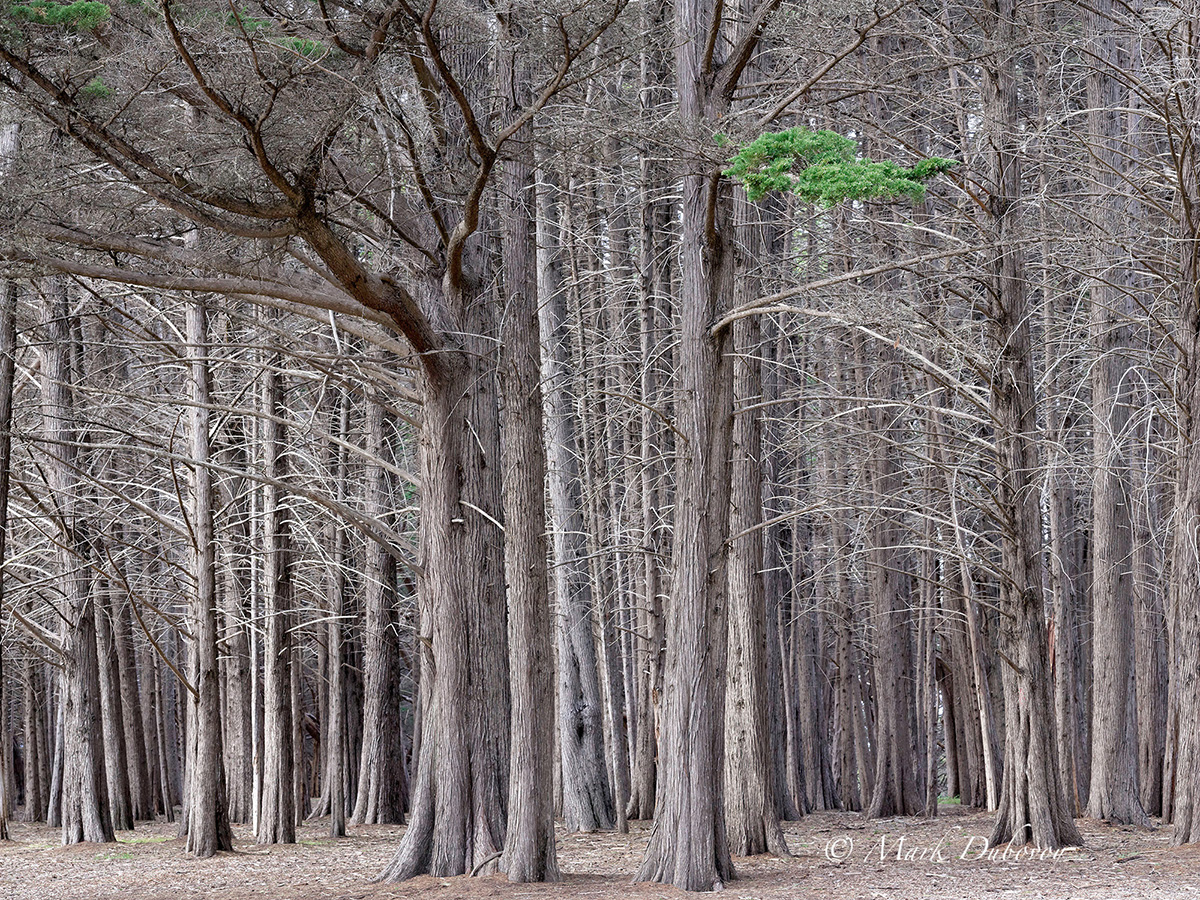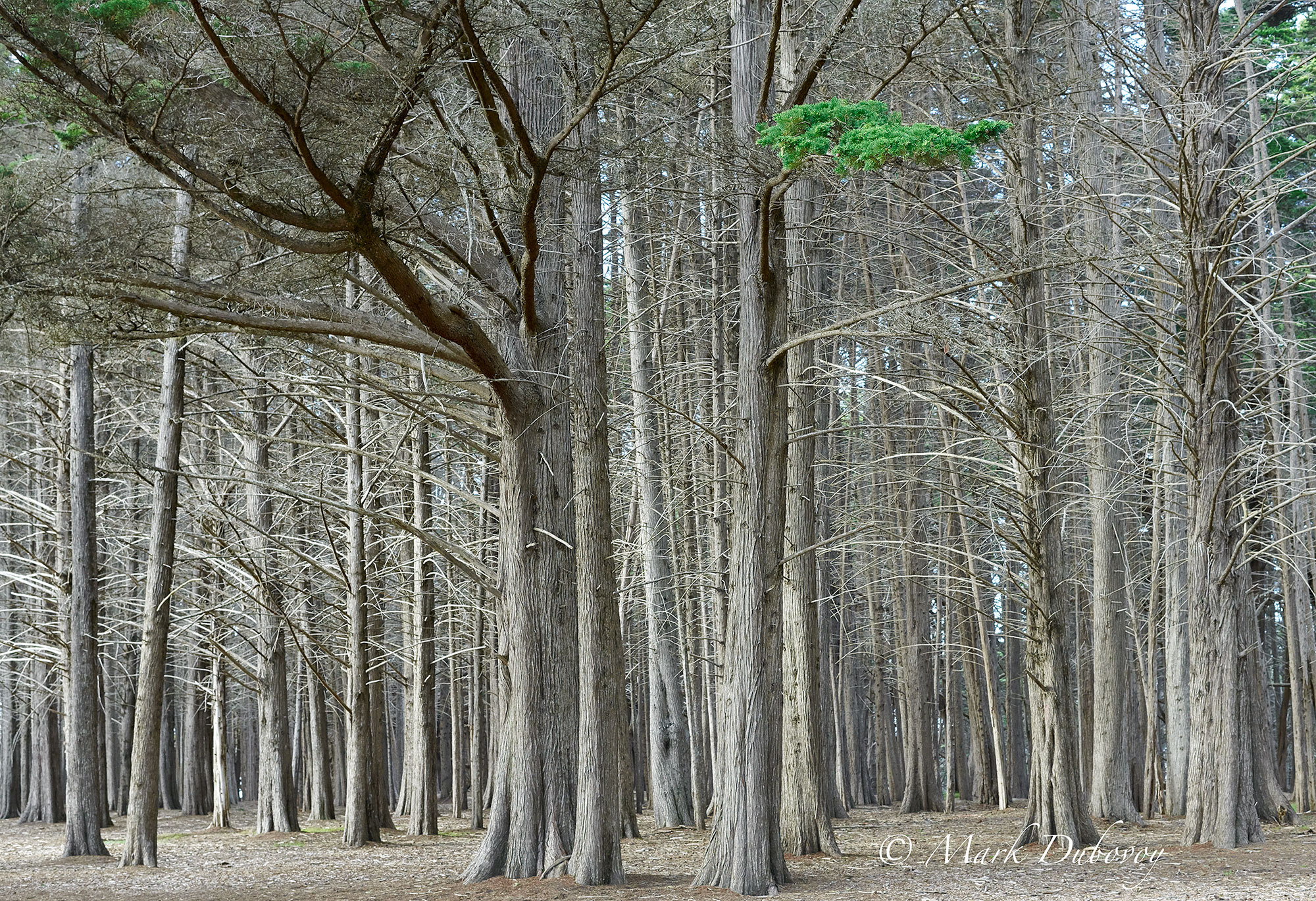Introduction
Last summer I was talking a walk in an area near Moss Beach in Northern California with some family members. We came across a grove of trees that seemed stunning to me because of the combination of many trunks and all bare branches except for one branch with some beautiful green leaves. The light was just about perfect too. Unfortunately, I did not have a camera other than my iPhone. I took an iPhone photo and after a bit more walking and dinner at a nearby restaurant, we all headed home.
Next….
The whole drive home and the whole next week I could not stop thinking about that beautiful scene. In the hope that the light would cooperate, I decided to return to that spot and hopefully be able to make a good photograph with a larger camera.
I had just purchased a Nikon D850 and I thought this would be the perfect opportunity to start putting the camera to the test and maybe write an article about it.
The image I captured with the Nikon is the main image in this article.
I was quite impressed with the Nikon image initially. I must say that the D850 is the best 35 mm camera I have used to date in terms of image quality. It is also a very significant improvement in terms of comfort, ergonomics and functionality versus prior Nikon cameras. It is a wonderful 35 mm instrument.
Having said all that, in the next couple of weeks after repeatedly looking at the image and extensive editing, for me there was something missing in the tree trunks. No matter what adjustments I made during the editing process, there was absolutely no way to get to the subtle color I remembered in the tree trunks. Even with all the controls and all the sliders turned to maximum in CaptureOne and/or Photoshop, the tree trunks just looked too dead and kind of gray versus what I remembered seeing.
I also had a lot of problems with the green in the leaves. The color was not quite right and again, no matter what I did during editing, I could not get it to look the way I remembered it.
What could I do now?
At this point, I decided the best thing for me to do was to go back to the same location with a Nikon print in hand and my PhaseOne. XF camera with Trichromatic back just in case.
Luckily the light was again excellent that day.
My intuition was right. The tree trunks had a subtle tonality that the Nikon failed to capture and no amount of editing could recover. The green leaves in the print also looked artificial and “man made” versus the green that nature gave us as a gift.
So I took one shot with the PhaseOne outfit and went home.
The end result
When I opened the PhaseOne file in CaptureOne it was immediately obvious that the colors were captured almost perfectly. I basically had nowhere to go while editing. The slightest amount of clarity and saturation was all the image needed to have all the impact of the original scene, as well as superb color reproduction.
No amount of editing in the Nikon file could get me to that point.
While I believe the differences will be clearly visible to the reader on a computer or tablet, I would like to point out that the differences are even more noticeable in a print.
Here is the PhaseOne image for comparison with the Nikon image at the top of this article.

Bare Trees and Green Leaves
Phase One XF with 150 mm Blue Ring lens
Conclusion
There are many discussions in various publications and forums about Medium Format versus 35 mm. For me, the trees in this image speak for themselves.
I find that often times I cannot express myself fully with 35 mm, but I can with Medium Format. This is the main reason I use it.
For me, it is not just about the number of Megapixels or the resolution of Medium Format. There is a lot more to image quality than resolution and Medium Format delivers it in ways that smaller formats simply cannot deliver.
I am sure there are those who would be perfectly satisfied with the Nikon image in this article.
But for me, the trees speak for themselves when they really come to life in the Medium Format image. It is this expressiveness and impact when I see a Medium Format image that makes the weight and cost of the equipment well worth it.






Your Thoughts